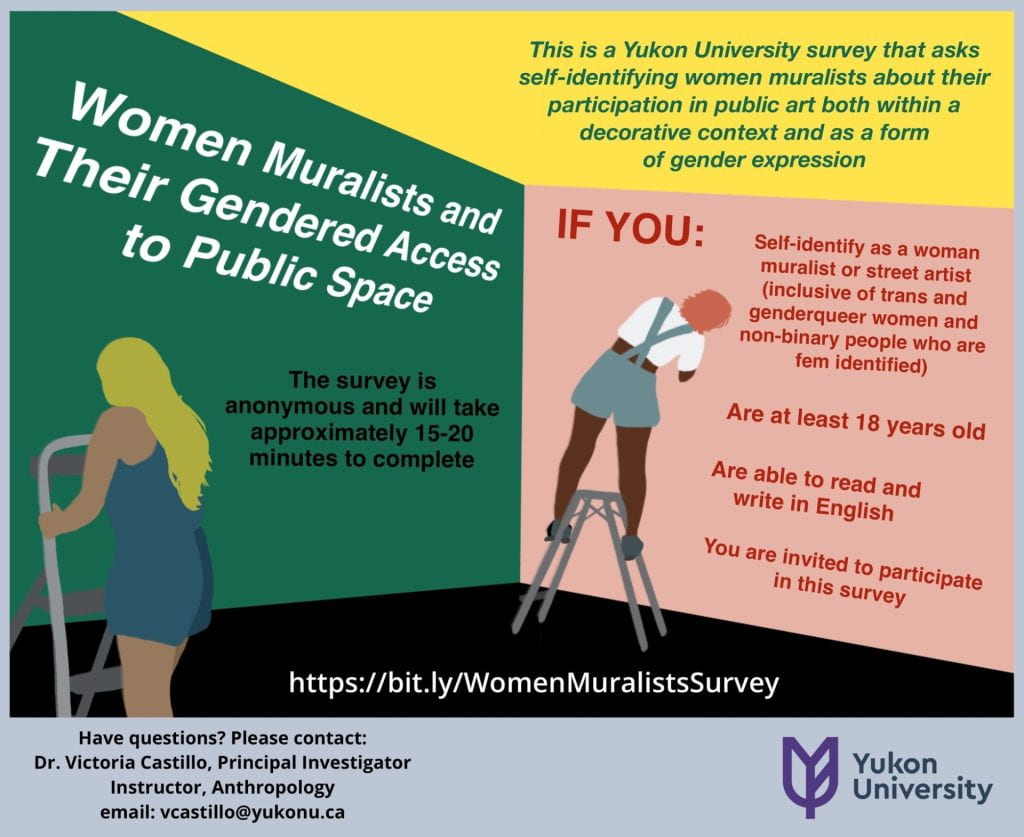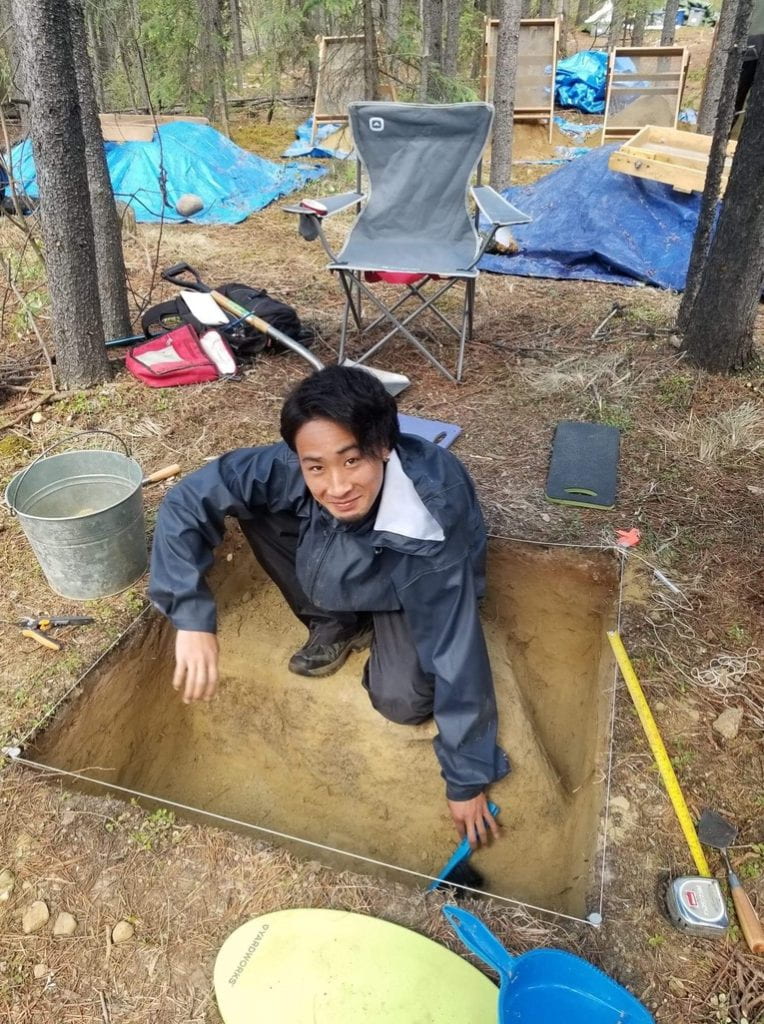Women Muralists and Their Gendered Access to Public Space

Instagram: @women_artists_making_murals
Survey Link: https://bit.ly/WomenMuralistsSurvey
Currently, my research uses an online survey to conduct a preliminary study exploring the perceived increase of women muralists (also known as street artists) in different localities. Particular attention is given to women muralists’ own impressions of their participation in public art both within a decorative context and as a form of gender expression with a focus on their access to public space (woman is defined as a person who self-identifies as a woman, inclusive of trans and genderqueer women and non-binary people who are fem identified). A further objective of this research is to identify if women muralists think their work is informed by their gender, and subsequently, whether their gender has influenced their ability to produce the street art they want to create. The aim is to create an anonymous online survey consisting of no more than thirty questions that will provide data on women muralists, which I can then use to determine if research on the role gender plays in mural making is significant for further study. Questions will focus on basic demography, art style and aesthetic, and gendered access to space.
________________________________________________________________________________________________________________________
ANTH 144 Artifact Analysis / Laboratory Work

This project aims to hire a student lab assistant to support the completion of McIntyre Creek artifact analysis and final report stemming from the 2019 ANTH 144: Heritage and Culture Field School archaeological excavations. The goal is to train a YukonU student in archaeological laboratory techniques, including artifact analysis. Yukon University student excavations that year recovered hundreds of lithic artifacts including a large number of obsidian microblade fragments. Microblades are small razor-like stone tools that were attached to shafts and used for hunting game. The McIntyre Creek site is of cultural significance to Ta’an Kwach’an Council and Kwanlin Dun First Nations and sits on their traditional territories. In the past, the area was a core resource location for Indigenous people of southern Yukon. We believe the site to be as much as 5,000 years old. The artifacts recovered are part of both Nations cultures and histories. The obsidian has been sourced to Northern British Columbia, which supports oral stories of trade routes between what is today British Columbia and the Yukon. The final report will meet Yukon Government permitting requirements and will be shared with Ta’an Kwach’an Council and Kwanlin Dun First Nation. Financial support is generously provided by the Research funds of Yukon University.